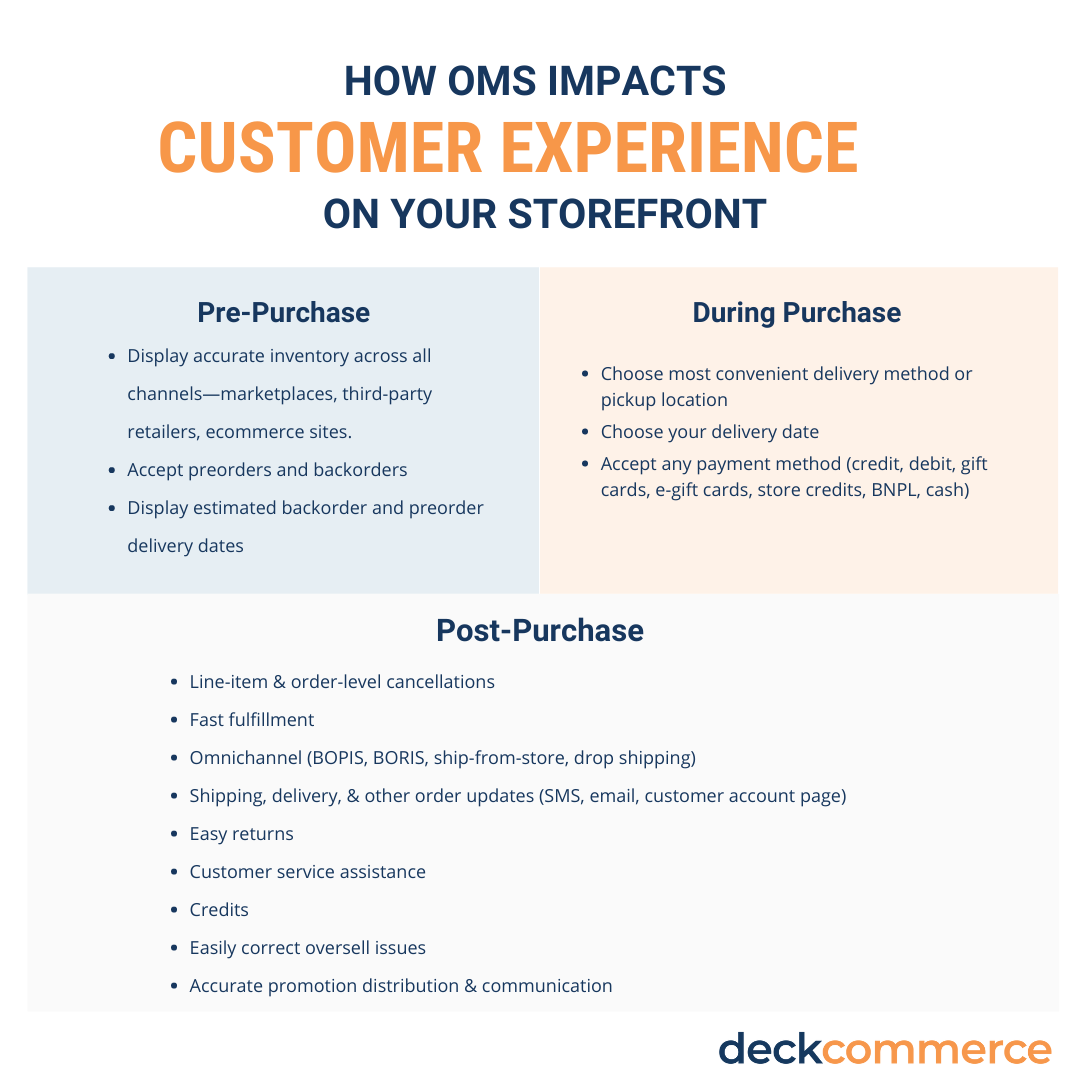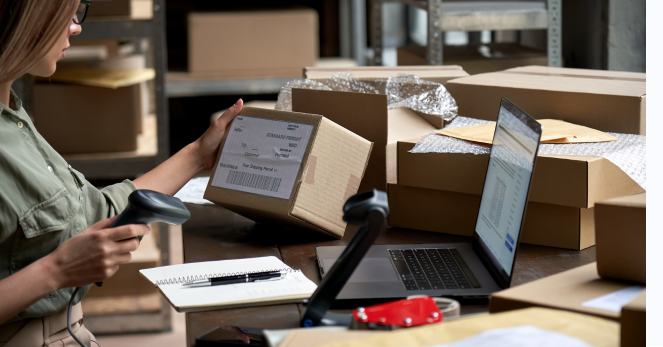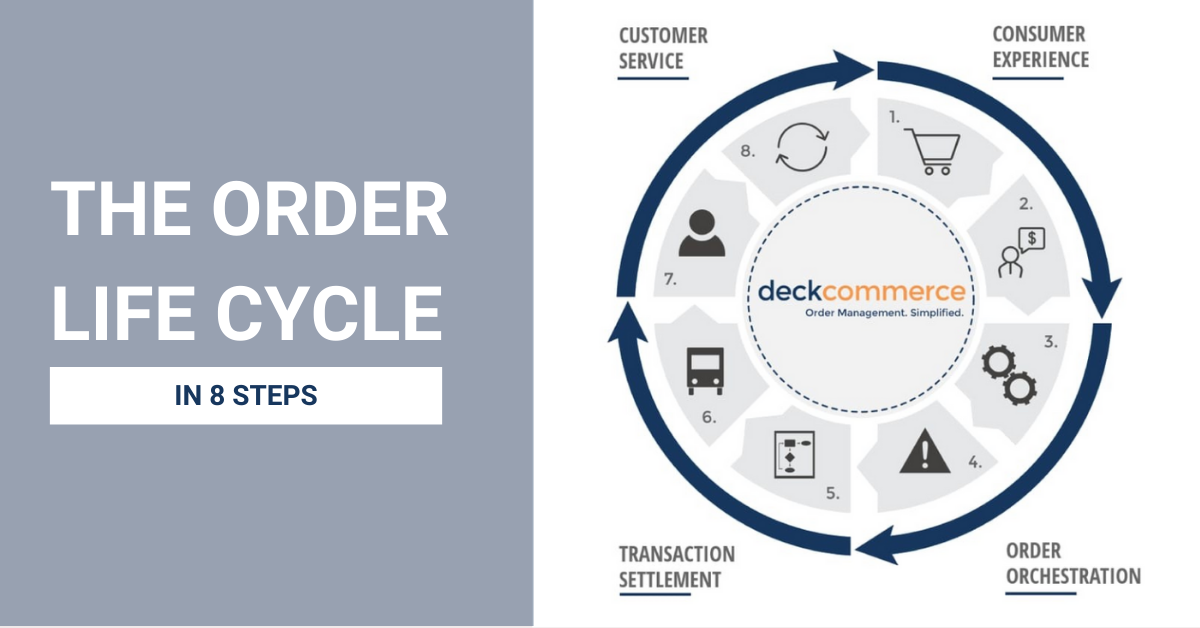
To create an ideal customer experience, retailers need to look at the entire purchasing process—from browsing and checkout through to delivery and returns. Every interaction with a brand is pivotal in developing a repeat (or better yet, lifelong) customer. One wrong move can be costly as 92% of buyers say they will abandon a brand if they have a single negative customer experience.
This is where having an order management system working in tandem with their storefront can help retailers manage the customer experience beyond the buy button.
Ecommerce Storefronts & Order Management Systems
An ecommerce storefront’s main function is to increase conversions through a seamless online shopping experience while an order management system’s main function is processing and servicing orders placed on the storefront.
While ecommerce storefronts and order management systems have very different purposes, when used together they can scale operations, grow revenue, and power amazing customer experiences.
No matter what storefront a retailer is using (Salesforce Commerce Cloud, Adobe Commerce (formerly Magento), Shopify/Shopify Plus, Big Commerce, Oracle Commerce, etc.), a system-agnostic order management system enhances the storefront by:
- Allowing seamless integrations with any frontend (multiple channels, buy now pay later, loyalty, gifting, etc.) and backend system (ERP, ESP, WMS, etc.)
- Being the retailer’s source of truth even if they change or add storefront technology in the future.
Can retailers use their storefront for order management?
The short answer is it depends. There are a variety of factors at play, but a good rule of thumb is that if a retailer is focused on growing sales volume and scaling operations, it’s time to look at investing in a dedicated order management system vs using lite or unreliable tools that can compromise customer experience.
Here are key characteristics of retailers that benefit from using a dedicated order management system in conjunction with their ecommerce storefront:
- They are focused on growth—whether it’s sales volume, omnichannel, multi-channel, or globally.
- They use multiple fulfillment centers, drop shippers, 3PLs, warehouses, or store fulfillment.
- These retailers typically process 100K+ orders a year.
- They are currently using manual or time-consuming processes to manage inventory, transactions, or fulfillment (ultimately preventing them from growing).
- They are continually innovating to keep their customer experience competitive.
How an OMS Works with Your Ecommerce Storefront to Optimize Customer Experiences
A customer’s experience with a brand begins long before and after they click the “buy” button. There are several factors that influence whether that shopper becomes a repeat customer. Retailers must look at how they can optimize the entire buying process from pre to post purchase.
Pre-purchase
When consumers are looking to make a purchase, a retailer’s job is to ensure they have all the information they need to make their decision easier and limit any frustrations.
Display Accurate Inventory
In 2021, 43% of shoppers named seeing in-stock availability as one of the most important factors when shopping online. With an order management system, retailers have visibility into their inventory across every channel—including marketplaces like eBay, Amazon or other third-party retailers, as well as their own ecommerce site. They can display certain percentages of inventory to different channels and leverage safety stock, so customers see exactly what is available where.
Offer Preorders & Backorders
An OMS also gives retailers the ability to accept preorders and backorders. Gain momentum and (line up revenue) for a new product launch by accepting preorders and displaying estimated delivery dates on your site. Accept backorders for popular products that are out of stock and highlight right on the storefront when the product is expected to be back in stock—giving customers the information they need to make their purchasing decision.
During Purchase
When consumers make their way to the shopping cart, their expectations are extremely high. With the average cart abandonment rate at 69%, it’s imperative for brands to make the purchase process as seamless as possible.
Add High-Converting Checkout Options for Payment and Delivery
One of the best ways to increase conversions is to give consumers options that work best for them—which is where an OMS comes in. Retailers can offer consumers the option to choose their most convenient delivery method or pickup location, select their delivery date, or even accept multiple ship-to addresses. It also allows retailers to accept consumers preferred payment methods including credit, debit, gift cards, e-gift cards, store credits, and buy now pay later options.
A retailer’s shopping cart experience becomes even more powerful when combined with the automation and flexibility of an order management system.
Post-Purchase
Post-purchase is where the rubber meets the road and retailers fulfill the promises they made at checkout.
Provide Fast Fulfillment & Frequent Order Updates
During the fulfillment process, customers expect fast fulfillment and to be notified every step of the way. That’s why retailers looking to optimize their entire customer experience rely on a dedicated order management system that can automate up to 98% of order processes—from orchestrating the most efficient fulfillment location (for both the customer and retailer) to notifying customers of shipping, delivery, or any other order updates.
Create Omnichannel Experiences
Omnichannel customers have a 30% higher lifetime value than the average customer. A dedicated order management system enables retailers to create a buy anywhere, fulfill anywhere, return anywhere model—from BOPIS and curbside pickup to drop shipping and ship-from-store. By setting up automated workflows in their OMS, retailers can offer customers the ability to select the fulfillment option of their choice, while being confident that they have the technology in place to fulfill on that promise.
Make Customer Service Interactions Painless
While automation saves retailers time, there are some circumstances when customers prefer to interact with the customer service team directly. An order management system empowers the customer service team with the data they need at their fingertips. Easily look up orders to give credits or make line-item cancellations. Give customers the ability to change their minds on their fulfillment location with grace periods before orders are sent to be fulfilled.
“Ninety-three percent of customers are likely to make repeat purchases with brands who offer excellent customer service.” - HubSpot research
Make Returns & Exchanges Easy
Returns and exchanges are inevitable, but they don’t have to be a liability. Making returns easy is a key driver in purchasing decisions with 67% of buyers checking the returns page before making a purchase. Giving customers the ability to self-initiate returns puts the consumer in control while giving the retailer the opportunity to incentivize consumers to make additional purchases during the process.
Read More: How an OMS Optimizes Your Returns Process
Summary
Fast growing retailers understand that letting their technology focus on what they do best is a win-win for everyone. When using a dedicated OMS in conjunction with an ecommerce storefront, retailers can be confident knowing they are using the right tools to create the ideal shopping experience.







.png?width=2000&height=2000&name=Blog%20Directory%20CTA%202000x2000%20px%20(2).png)






.png?width=2000&height=2000&name=Blog%20Directory%20CTA%202000x2000%20px%20(3).png)
